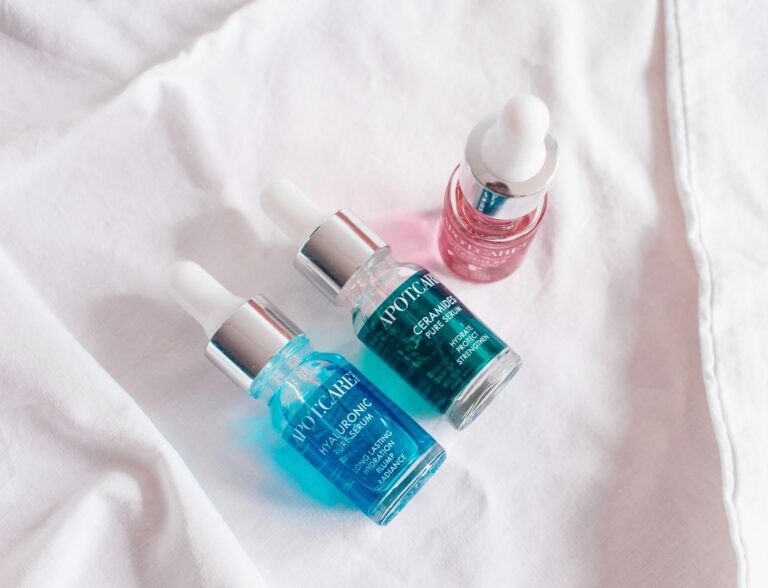
If you are curious about fillers and their potential to enhance your appearance, this article offers a comprehensive overview of facial fillers. It delves into the fundamentals of what fillers are, how they function, and the different types available.
Furthermore, it discusses how to know when it’s time to get your fillers topped up in the UK. Additionally, it provides guidance on how to find a reputable filler provider in the UK, enabling you to make informed and confident decisions on your beauty journey.
What Are Fillers?

Fillers, often referred to as dermal fillers, are non-surgical cosmetic treatments designed to enhance facial aesthetics by rejuvenating the skin and addressing signs of ageing, such as volume loss and wrinkles.
These injectable fillers are composed of substances like hyaluronic acid, a naturally occurring compound in the skin, which helps to plump and restore facial contours, resulting in a more youthful appearance and improved symmetry.
As the popularity of aesthetic procedures continues to rise, fillers have become a preferred choice for beauty maintenance, allowing individuals to achieve their cosmetic goals and enhance their overall skin texture.
How Do Fillers Work?
Fillers function by injecting hyaluronic acid or other substances into specific areas of the skin to restore lost volume, enhance facial features, and improve hydration and elasticity. This non-surgical treatment option is especially effective for minimising signs of ageing, such as wrinkles and sagging.
It allows for subtle adjustments that enhance natural beauty without resorting to invasive procedures. Additionally, the results can be immediate, which contributes to the popularity of fillers among those looking for a quick enhancement to their facial aesthetics.
What Are the Different Types of Fillers?
There are various types of fillers available on the market, each specifically designed to address different cosmetic goals and enhance facial aesthetics.
Among these, hyaluronic acid fillers are particularly popular for delivering immediate volume and hydration. Additionally, calcium hydroxylapatite fillers, poly-L-lactic acid fillers, and polymethylmethacrylate fillers each offer distinct properties and applications tailored to different needs.
To ensure the right dermal filler procedure, it is crucial for individuals to consult qualified practitioners who can recommend the most suitable option based on their unique requirements and desired outcomes.
1. Hyaluronic Acid Fillers
Hyaluronic acid fillers have become a popular choice for addressing volume loss and reducing wrinkles in facial aesthetics, as they replicate the natural substance in the skin that helps maintain hydration and elasticity.
This innovative treatment offers a range of advantages, making it a preferred option for those looking to enhance their appearance. One of the key benefits is its impressive safety profile; it is generally well-tolerated with minimal risk of adverse effects.
Hyaluronic acid fillers deliver natural-looking results that blend seamlessly with the skin, ensuring enhancements appear subtle yet effective. Their versatility allows practitioners to use them for various facial features, whether it’s plumping the lips or refining the cheekbones.
Proper aftercare is crucial for achieving optimal outcomes, and understanding the appropriate treatment frequency can assist individuals in maintaining their desired results over time while minimising any potential skin reactions.
2. Calcium Hydroxylapatite Fillers
Calcium hydroxylapatite fillers stand out because they contain a substance similar to a mineral that occurs naturally in bones. This unique composition not only provides immediate volume but also stimulates collagen production, promoting long-term skin rejuvenation.
These fillers work progressively, enhancing the skin’s structure and volume as collagen is generated. They are particularly suitable for individuals looking to address deeper wrinkles and improve facial contours, such as the cheekbones and jawline, resulting in a more youthful appearance.
The effects of these fillers are generally long-lasting, typically ranging from 12 to 18 months, which makes them a favoured choice in many treatment plans. Regular follow-up appointments allow practitioners to evaluate the results and assess whether additional sessions are needed, ensuring the best possible outcomes for individuals seeking to refresh and revitalise their appearance.
3. Poly-L-Lactic Acid Fillers
Poly-L-lactic acid fillers distinguish themselves from traditional fillers by gradually stimulating the body’s natural collagen production. This process results in a subtle and natural-looking restoration of volume over time.
This innovative approach requires individuals to engage in a series of treatment sessions, typically spaced out over several weeks or months, to achieve the best possible results. By adhering to a well-structured maintenance schedule, individuals can not only enhance their aesthetic outcomes but also prolong their effects.
Patient education is a vital component of this journey. Understanding what to expect allows individuals to set realistic goals and builds anticipation for the gradual transformation.
Ultimately, by embracing these aesthetic practices, individuals can enjoy a rejuvenated appearance that evolves gracefully, rather than experiencing abrupt changes.
4. Polymethylmethacrylate (PMMA) Fillers
Polymethylmethacrylate (PMMA) fillers are a category of permanent fillers known for their durability, making them an excellent choice for individuals looking for long-term enhancements in facial aesthetics.
These fillers contribute significantly to achieving improved facial symmetry, which can greatly enhance a client’s overall appearance and boost their self-confidence. When considering PMMA, it is essential to follow strict safety protocols to minimise risks and ensure favourable outcomes.
Comprehensive treatment assessments conducted by skilled professionals are crucial, as they help tailor the approach to meet individual needs, ultimately enhancing the client experience.
The longevity of PMMA fillers means that fewer touch-ups are necessary, allowing clients to enjoy their enhanced features for an extended period without the need for ongoing commitment. It is also important for those considering this treatment to understand the potential side effects and to ensure that proper placement is carried out.
How Long Do Fillers Last?

The duration of results from fillers can vary considerably based on several factors, including the type of filler used, the area being treated, and individual characteristics such as skin quality and metabolism.
Typically, the effects can last anywhere from several months to a few years.
When Is It Time to Get Fillers Topped Up?
Understanding when to schedule a filler touch-up is crucial for preserving a youthful appearance and achieving the results you desire.
Subtle signs that the fillers are wearing off can indicate it’s time for a treatment, ensuring you maintain that fresh look.
1. The Effects Have Worn Off
One clear indication that fillers may require a touch-up is when their effects begin to fade, leading to noticeable volume loss and changes in skin hydration.
As time goes on, other signs of ageing, such as fine lines and a reduction in skin plumpness, may also become evident, underscoring the importance of a thorough assessment. Regular evaluations are essential to help individuals achieve their aesthetic goals and maintain a youthful appearance.
Monitoring the frequency of treatments is crucial, as it enables a better understanding of how long the results last and when it may be time to consider further interventions.
Adhering to professional recommendations tailored to one’s specific skin condition can greatly enhance outcomes, allowing for a timely approach to revitalising facial features and preserving that sought-after glow.
2. Unevenness or Asymmetry
Unevenness or asymmetry in facial features can suggest that a filler touch-up may be necessary, as these irregularities can disrupt the facial symmetry that was initially achieved through treatment.
It is important for individuals to recognise these subtle changes early, as they can have a significant impact on overall appearance and self-confidence. Qualified practitioners play a crucial role in this process, as they possess the expertise needed to assess each situation and create a tailored treatment plan that addresses specific concerns.
By thoroughly evaluating the unique features of a client, these professionals ensure that any adjustments made are both subtle and effective, enhancing natural beauty without sacrificing aesthetic goals.
The experience provided by skilled injectors also fosters a supportive environment, encouraging clients to comfortably discuss any perceived imbalances, which ultimately leads to a more satisfying and symmetrical outcome.
3. Dissatisfaction with Results
If you find yourself feeling dissatisfied with the outcomes of your fillers, it might be time to consider a touch-up or adjustment to better align with your aesthetic goals.
It is essential to reflect on the specific aspects of the results that you believe could be improved to enhance your overall appearance. Engaging in a conversation with qualified practitioners can provide you with valuable feedback and insights, as they can present a range of treatment options tailored to your unique needs.
Exploring patient education can give the power to you to make informed decisions regarding any additional procedures. Remember, maintaining open communication about your concerns is crucial for achieving better outcomes, ensuring that your filler results are in harmony with your personal vision.
4. Changes in Facial Structure
As individuals age, changes in facial structure may require filler touch-ups to maintain facial contours and address the new signs of ageing that can appear over time. This is primarily due to the natural decrease in collagen production and skin elasticity, which can impact how fillers integrate and function within the skin.
As the skin loses these crucial properties, it may become necessary to adjust the intervals between treatments to ensure consistent and satisfactory results.
Given these considerations, those looking to enhance their appearance should take professional recommendations into account. Such guidance can offer personalised insights into the optimal frequency of filler administration, enabling individuals to achieve the best outcomes while embracing a balanced approach to ageing gracefully.
How to Find a Trusted Filler Provider in the UK?

It is essential to locate a reputable filler provider in the UK to ensure both safety and satisfaction with cosmetic treatments.
Adhering to UK regulations and industry standards is vital for maintaining quality assurance in these procedures.
1. Research the Provider’s Credentials and Experience
When searching for a filler provider, it is important to carefully evaluate their credentials and experience in the field of aesthetic procedures to ensure they are qualified injectors.
Gaining an understanding of the various types of credentials available can significantly enhance one’s peace of mind during the client experience. It is advisable to seek out providers who possess relevant certifications that demonstrate their expertise in administering fillers safely and effectively.
This includes specific training from reputable institutions as well as a proven track record of practical experience with different filler products. It is essential to ask about their familiarity with safety protocols and their adherence to industry standards.
Additionally, valuable insights can be gathered from professional recommendations and testimonials, which can help determine a provider’s reliability and their commitment to patient safety and satisfaction.
2. Read Reviews and Ask for Recommendations
Reading reviews and seeking recommendations from previous clients can offer valuable insights into the experiences others have had with a potential filler provider.
Exploring treatment assessments can also help clarify the quality of care patients received, providing a clearer picture of how effectively the provider meets individual needs. When considering the cost of dermal fillers in the UK, understanding patient satisfaction levels becomes even more critical, as it ensures that the investment aligns with the quality of results.
Pursuing balanced feedback—incorporating both positive and negative reviews—encourages a more thorough evaluation of the provider’s capabilities. Engaging in discussions with reliable sources not only aids in making informed decisions but also highlights the importance of personal experiences when selecting the right professional for aesthetic treatments.
3. Schedule a Consultation
Scheduling a consultation with a filler practitioner is an important step in the decision-making process, as it allows for a personal assessment of your unique needs and aesthetic goals.
During this consultation, you will have the chance to engage in a meaningful dialogue about your desired outcomes. It is advisable to come prepared with questions regarding the practitioner’s experience, the types of fillers available, and any potential risks associated with the treatment.
Discussing your medical history or any skin concerns can lead to tailored, professional recommendations that specifically address your individual situation. The practitioner will likely take this opportunity to develop a comprehensive treatment plan, detailing the steps involved and what you can expect after the procedure.
This process ultimately aims to ensure that you feel confident in the choices you make.
4. Ask About the Products Being Used
It is essential to inquire about the specific products used by the filler provider during treatments to ensure that they adhere to safety and effectiveness standards in line with industry regulations.
In the realm of patient care, possessing product knowledge is vital, especially when evaluating the various treatment options available. The use of approved fillers not only complies with UK regulations but also ensures that qualified injectors prioritise safety in their practice.
When patients are well-informed about the specifics of the products being administered, they are give the power toed to make knowledgeable decisions, which ultimately enhances their satisfaction with the results. This level of transparency builds trust between providers and patients, highlighting the importance of product knowledge in achieving both safety and favourable outcomes in aesthetic treatments.
Frequently Asked Questions: How to Know when It’s Time to Get Your Fillers Topped Up in the UK
What are fillers and why do people get them?
Fillers are injectable substances that are used to add volume to certain areas of the face, such as the cheeks, lips, or under eyes. They can also be used to smooth out wrinkles and fine lines. People often get fillers to enhance their facial features or to achieve a more youthful appearance.
How long do fillers typically last?
The longevity of fillers varies depending on the type of filler used, the area it was injected in, and individual factors such as metabolism. However, on average, fillers can last anywhere from 6 months to 2 years.
What are the signs that it’s time to get my fillers topped up?
There are a few tell-tale signs that it’s time to get your fillers topped up. These include a noticeable decrease in volume in the treated area, the return of wrinkles or fine lines, and a change in the texture or appearance of the filler.
How do I know if my fillers need to be touched up or completely redone?
In most cases, a touch-up will be enough to maintain the desired results. However, if your fillers have completely dissolved or if you are unhappy with the overall appearance, it may be time to consider getting them completely redone by a qualified professional.
What is the average cost of getting fillers topped up in the UK?
The cost of getting your fillers topped up in the UK can vary depending on the type of filler used, the amount needed, and the location of the treatment. On average, you can expect to pay anywhere from £200 to £500 for a top-up session.
Are there any risks or side effects associated with getting fillers topped up?
As with any cosmetic procedure, there are potential risks and side effects associated with getting fillers topped up. These may include bruising, swelling, redness, and infection. It’s important to discuss any concerns with your practitioner and follow their aftercare instructions to minimise the risk of complications.






